Michael Mizzi, a senior planning manager at the City of Toronto, was guest speaker at Long Branch Neighbourhood Association AGM, Nov. 18, 2020 – TRANSCRIPT
The transcript was prepared with a YouTube editing app and ScribeExpress software as described at a previous post.
On Nov. 18, 2020, at the annual general meeting of the Long Branch Neighbourhood Association (LBNA), Christine Mercado, Chair of the LBNA, welcomed the evening’s guest speaker, Michael Mizzi.
Mizzi is director of zoning and secretary-treasurer of the Committee of Adjustment at the city’s planning division.
The transcript (lightly edited for clarity) reads:
Christine Mercado: We were introduced to Michael through one of our residents, David Godley, and Michael’s actually been down into Long Branch and he’s taken a tour and he also lives in Etobicoke, so he is definitely a West End boy.
So, we would like to welcome you to our AGM. And Michael’s going to be doing a brief presentation on the project that’s going to be sort of the biggest project, which is expanding housing options in neighbourhoods, and he’s here to explain this project, which is kind of on the edge of going into his working groups. And he’s going to bring us up to date on how that might affect Long Branch. So, welcome, Michael.
Michael Mizzi: Thank you, Christine and Judy and the board. There’s a little PowerPoint here we’ll put on. As Christine said, I am the director of citywide zoning and I’m also the secretary-treasurer of the Committee of Adjustment so, I’m sure some of you don’t like me for that reason, so I’ll start with that. But, yeah, I’m also from South Etobicoke, too, so I know the area well, and happy to be here.
And today, I was asked to speak about what we’re doing in terms of the “missing middle.” We actually don’t call it the missing middle; we call it Expanding Housing Options in Neighbourhoods, and if we could just go to the first slide.
Slide 1: Directions from Council. The slide refers to a Council direction: MM9.36; a design competition: PH9.4; and a work program: PH15.6.
So, how did this start formally for us? Start back in the summer of 2019, in a motion from the Mayor, and seconded by the Deputy Mayor Bailão, citing four key things: shrinking family sizes; changing demographics; the need to allow more people to age in communities; and to accommodate more people in underused houses.
We were asked to look for ways to allow gentle density throughout the city, to try to alleviate the demand for housing and to build essentially a more equitable city.
So, the chief planner, my boss, was directed to report on options, and a timeline to increase housing options and planning permissions, and to consult with registered community associations like yours before coming back with a report.
Later, in October of 2019, we were asked to facilitate a design competition, to solicit ideas that could help shape policies for a more permissive zoning regime, in areas designated as Neighbourhoods in Toronto’s Official Plan.
Finally, at least on this slide, this past summer, City Council adopted our work plan for this initiative. It doesn’t change planning permissions at this time, but that report – and on the slide deck, which happy to hand out, you can hyperlink direct to these reports – we’ve established a work program for the next 18 months, and we hope to bring forward a series of expanded or changed permissions over the next year, to three years.
So, if we could go to the next slide. So, what are we talking about when we talk about the missing middle?
Slide 2: Missing middle options
In Toronto’s context – because it’s different across cities in Ontario, and the country; people define it with some variation – for us, it’s not detached houses, and it’s not mid-rises: it’s everything in-between.
Expansion of gentle density
So, that would be duplexes, multiplexes such as triplexes or fourplexes, walk up four-storey apartments, and other hybrids, like townhouses.
At the city, we also consider secondary suites, laneway suites, and other accessory dwelling units as part of this sort of continuum, between detached houses and mid-rises. So, they represent, for us, this form of gentle density that we want to expand, from the direction of Council, more widely across the city.
Now, it’s important that the title – it’s got a lot of press; it’s on Twitter quite a bit – the missing middle, these types aren’t missing in Toronto, but they’re relatively missing in new development.
So, as it stands now in Toronto about 44 percent, 45 percent of the city’s housing stock is dwellings, actually, in apartments over five storeys tall.
So, almost half of the city lives in apartments above five storeys; 24 percent is detached houses, and about 31 percent are these types in-between: the missing middle.
I should add that, notwithstanding that what you might see as a neighbourhood association, in terms of Committee of Adjustment applications to build new houses in your neighbourhood: they represent an extremely small proportion of the housing that comes to us for review. Most of the current proposals the city sees are projects involving buildings over five storeys. So, if we could go to the next slide, Judy.
Slide 3: Official Plan map
So, for those who have not seen this – I know your board has probably looked at this many times – this is Toronto’s Official Plan map.
And the yellow, which came mostly from the zoning map, the yellow: this is where you get this reference to the Yellowbelt. Because we colour code our OP, and Zoning maps, in a coordinated way, and yellow has traditionally represented the low scale neighbourhoods.
They’re, actually, geographically, the neighbourhoods in yellow on this map is the largest land area of the city.
It represents both a huge optical illusion, on this map: no one ever believes me when I say this, but if you add up the land parcels, only about 35 percent of the city is actually designated Neighbourhoods, even though when you look at this map it clearly looks like it’s a whole lot more than 35 percent.
Suffice to say it’s by far the most extensive land use in the city. And about 1.4 million or 1.5 million of Toronto’s 2.7 or 2.8 million people, live in this yellow area, according to the last census.
So, what does the Official Plan say we want to do, in terms of where we want to direct housing?
We actually – it says we want to direct it to areas best served by transit, and existing infrastructure. And those areas are designated for growth, and a lot of what’s in yellow here, are areas that we would call stable, but not necessarily static.
So, this neighbourhood designation permits lower scale buildings, like detached houses and semis, but it does also permit, in a lot of the neighbourhoods, other types of uses like triplexes and townhouses and walk-ups.
So, development in neighbourhoods is subject also to development criteria: respect and reinforce the existing physical character of each neighbourhood is a very important component of the OP. So, respect and reinforce.
So, the area is extensive; there’s considerable variation in its organization, the layout of the streets, the building forms, the demographics.
And while it can be complex to deal with – it can be challenging to deal with developers in these areas, the neighbourhoods associations – there’s also significant opportunities. So, Judy if you could go to the next slide.
Slide 4: Residential zones
So, this map is the residential zones that cover the city, essentially following up on the Official Plan. So, you can’t talk about the missing middle without talking about the zoning of the neighbourhoods. The type of residential building that’s found in a neighbourhood is permitted by way of the local zoning, and it helps to define its local character.
So, in the amalgamated city of Toronto, residential zoning is generally more permissive in the pre-World War Two city, or the pre-World War Two geographies, primarily the former city of Toronto.
And you see that in this kind of brown tone where it’s zoned R Residential: far more permissive. And you can see in that little chart, what it permits. [Chart refers to: Detached house; Semi-detached house; Townhouse; Duplex; Triplex; Fourplex; Apartment Building.]
Yet if you go to the more modern or master-planned neighbourhoods of what were the suburbs at one time – Etobicoke North, York, and Scarborough – you actually have far more restrictive zoning, primarily covered by RD Residential Detached.
So, a large part of the city is zoned in this RD category; about 31 percent of the land parcels of the city are zoned RD – primarily, like I said, in the postwar planned areas.
So, in other words if we leave out the rights of way, about 70 percent of the lands-designated neighbourhoods have zoning permissions that only allow for a detached house – 70 percent of the neighbourhoods, leaving many neighbourhoods, in our opinion, with very limited options: secondary suites, which only recently got added by first the province, and then by us.
In fact, it was our zoning team that brought forward secondary suites right across the city – our new, relatively new, as of right option – to add to any residential detached house. So, if we can go to the next slide, Judy.
Slide 5 – Four Priorities, Starting Fall 2020
So, when we brought forward that work plan report, we asked Council to endorse four priority projects, that we want to advance in this next year.
Coach houses and garden suites
The first, on the left, is just illustrative here – it doesn’t mean it’s higher priority than the others – is coach houses and garden suites.
The objective here is to develop appropriate Official Plan policy and zoning bylaw amendments, to permit garden suites and coach houses across the city. That’s the goal here; it’s the objective.
Big considerations, though, include evaluating the pilot on laneway suites, that’s out there now. We are allowing for laneway suites, where lanes exist, primarily in the former city of Toronto.
And we want to evaluate, you know, how that’s working, this coming year. Also, we’re going to have to look at development charges, and parks levy credits, and other fees that affect building other forms of housing. We have heard from many people, that things like development charges really inhibit opportunity for missing middle housing.
So, in the short term, we hope to have a preliminary report out in – we were targeting December, but it’s looking like it will probably be January 2021 – with where we want to go with coach houses and garden suites.
Multiplexing permissions: adding to what’s already there
Second kind of area, or second priority, is multiplexing permissions: so, basically adding units to what’s already there. So, adding units within the sort of general building envelope that currently exists.
So, again, you know, we want to come up with a new Official Plan policy and zoning changes, to accommodate more housing units, within the existing housing stocks. So, duplexes and triplexes within the built form that currently exists, in those envelopes.
So, analysis and consultation will soon start up. We have created a team that we’re going to actually endorse or confirm tomorrow, to start in on this kind of work across the city. And they will undoubtedly be talking to neighbourhood associations like yours.
Major streets
The third area is what we call major streets. Now, some of you may know, some may not, that we have a classification in the city called Avenues, and avenues carry a lot of the newer mid-rises in the city; The Queensway, for example, would be an avenue.
But we have a lot of what we call major streets, and they actually are defined, and they are shown in the zoning bylaw. And a lot of properties at very low scale front on major streets. An example would be in Etobicoke, like an Islington or a Kipling, where we have a lot of postwar bungalows on relatively good-sized lots that are on a pretty major arterial, that’s served by hundreds of buses a day, for example, carrying people to subway stations, to nodes.
So, there’s a feeling out there that these major streets are a real opportunity – especially given that they’re on these relatively big rights of way – to explore the opportunity for perhaps changing the zoning on some of these major streets.
Believe it or not, we have 250 kilometers of these types of streets in the city, and most of them are, you know, whether you take a Dufferin, for example, or a Lawrence Avenue, these are streets that have a relatively low scale, or low amount of housing on them, yet there are unusually large rights of way, for the housing that fronts on them.
Ward 19, Beaches-East York
Finally, Ward 19: that’s the Beaches; it’s Councillor Brad Bradford’s area. At his request, and Council endorses, we are going to do a pilot in that ward – we’ve already started work on that – and looking at options to demonstrate these three other priorities, in his ward.
We’re going to work with CreateTO, which is the city’s real estate agency to test, on some sites, how we might fit in some of this, and how it drives the zoning changes we might want to do. So, we’ll test for affordability, sustainable development; the pilot will guide how we’ll deal with regulatory and financial issues; and essentially, it’s a demonstration.
So, with that we, like I said earlier, will tomorrow confirm our four teams. We will have teams of roughly two co-leads and eight planning staff, on each team, from the department. So, we’ve got about 40 people involved in the department, and moving forward over this next year, on these four projects.
So, with that I just want to provide, Christine, just a short five, six, eight-minute summary on what we’re doing, and happy to take any questions on that, or other planning issues affecting Long Branch. Thank you.
Q & A
Christine Mercado: Great; thank you very much, Michael. We do have some questions that have already come in, and I can ask the rest of the folks, that are on the line, if you want to put in some additional questions, please put them in the Q & A, and we’ll put them to Michael.
So, one of these questions here, Michael: Is this priority housing work on zoning and approvals related to the project at Lake Shore and Islington, a potential shelter versus rent geared to income housing?
Michael Mizzi: So far, the four priority areas are not focused on any specific projects happening in any neighbourhood right now. The effort here is going to be about general changes to the OP and zoning provisions, to facilitate this gentle density across the city. But it’s not currently linked to any specific project or supporting a specific project because of this, so, no, there’s not a direct link.
Christine Mercado: Okay; and here’s another question that came in through the Chat: When will coach houses be approved as of right, and what if it has a kitchen and a bathroom – like, I’m assuming a coach house has to have a kitchen and a bathroom as well, but what’s the timing, I guess, for the coach houses and will there be consultations on those? I think you mentioned the reports coming out in January. Is there a consultation on those prior to being launched?
Michael Mizzi: That report in January will not be a report that brings forward recommendations in terms of zoning changes, for across the city, to permit coach houses. It’s a report to bring forward what we’re proposing to do, in greater detail, and we will go out and consult after that. So, that’s a project that will take us through all of next year.
Coach houses have moved forward in various ways, and other municipalities in this province, like Ottawa, they call — you know, they’re called different things in different cities, but generally the idea being they’re subordinate to the main house, or main dwelling.
They’re serviced off of that house – they’re not serviced independently, and usually from a – what will permit, from a zoning point of view, they’re usually lower scale; they’re smaller: it’s essentially a similar concept to laneway housing.
There’s obviously going to be issues that come up with lot size. I mean if your lot’s not big enough to accommodate such a use at the back, or there isn’t an existing garage that’s easily converted to that kind of use, or sits right on the fence line, and how big will we allow that?
Those are going to be the challenges that will undoubtedly concern some neighbourhoods, and so we’re going to look carefully at those kinds of performance standards: the setbacks, the height, etc. That’s work still to be done in 2021.
Christine Mercado: Okay, here’s a question about – From your opinion, what is Lake Shore in Long Branch primed for over the next 20 years? What types of changes should we expect outside of more density, if any?
Michael Mizzi: I wish I was so knowledgeable on what was going to happen 20 years from now. You know, I can tell you something, for your audience. I used to be, actually, the planning manager for South Etobicoke for many years. Councillor Grimes was a councillor for the latter part of my tenure, when I was in South Etobicoke. And it’s actually, from a Committee of Adjustment point of view, our busiest ward in the entire city, of all 25 wards.
Councillor Grimes’s ward [Ward 3, Etobicoke-Lakeshore] takes in the most applications, at the CofA. So, it’s clearly a really desirable area, and we know it’s because it’s got many generous lot neighbourhoods. So, a lot of lots in some of the neighbourhoods are very generous, well sited on the lake. It’s got the only streetcar line that’s going west to the edge of the city. Internally, we feel South Etobicoke will probably face development pressures that are greater than large parts of the rest of the city.
You can see it happening right now in Humber Bay Shores. The cookie factory there: Mr. Christie; and certainly, your neighbourhood has felt enormous pressure in terms of lot severances. You actually have more lot severances occur in Long Branch and South Etobicoke than anywhere else in the city.
I don’t see that pressure subsiding. I think it’s considered one of the more developable areas of the city, one of the more desirable areas by builders, so managing that growth, it will be a challenge for organizations like yourself and the planning department.
Judy Gibson: You’ve kind of answered how do you see this project affecting Long Branch, but I guess that the piece along it, Michael, and I’ll add to your last question, is one of the reasons that Long Branch is so desirable is our tree canopy, and the feel of our neighbourhood.
And the development pressure is, many people here feel, it’s taking that character away. So, what will the city do to protect the character, the existing character of Long Branch, which makes it desirable for us to live here, and how will this project affect us, where we already have a middle: we’re not missing the middle here in Long Branch.
Michael Mizzi: I’m well aware of, you know, the strong association of Long Branch with preservation of trees, and respect for the tree canopy, and growth of the tree canopy. I can tell you lots of neighbourhoods have that same desire and want to protect the tree canopy; and there’s always competing objectives with new development that affects, in particular, the private trees that are on lots that may be within the as of right, or the amended as of right, outline of new development, or new housing.
And that challenge against the trees, and affecting roots, we’ve absolutely had street trees affected by new curb cuts, and wants for parking pads, and greater driveway and garage dimensions.
It’s absolutely a challenge. We’re working closely with urban forestry, in fact at a lengthy meeting with Urban Forestry yesterday, on sort of the issue that I know is dear to your heart, which is getting the plans to show more information that come into the CofA, related to what’s on every property in terms of trees.
It’s a big challenge; there is absolutely a conflict; there’s generally been a history, where if a building is permitted, or gets permitted by amendment, or by variance, that it often trumps, or impacts the tree that was there. It definitely has been the history. I think there’s a greater awareness and we’re, certainly, we’re educating, for example, the CofA panel members to be more cognizant of the impact of development on trees and the canopy.
But I think it’s going to be an ongoing piece of work, education piece of work, and you guys do a great job with it, but it’s all over the city. I mean, it’s a big issue.
Christine Mercado: Okay, maybe one last question here, Michael, and then I guess the comment is, we’ve got quite a few more questions that we won’t be able to get to, would you mind if we sent you some of these after the meeting, and maybe we could have a chat?
Michael Mizzi: Sure.
Christine Mercado: So, we’ll just ask one more and then we’ll handle the rest of them that way.
So, question here is what are the metrics that are associated with measuring either status or progress on the missing middle issue? So, the comment is you can’t manage what you don’t measure.
Michael Mizzi: Very good point, yes. I mean, we keep – it’s probably not known to many, but we actually have a very robust and strong business performance and standards group, plus a statistics team, that’s constantly mining.
We do a lot of lot analyses at the city, and we have a pretty good handle on – you know, we can access every single parcel of land in the city, know what’s on those parcels of land; we have a good idea of the dimensions; we can dimension it all off.
We are doing those analyses, and it is part of it; we know exactly how many detached units there are, or how many semis, and of course the metrics will be that we have more gentle forms of density occurring over the next coming years.
For example, we’re monitoring now, how many building permit applications come in for secondary suites. We’ll be doing the same down the road, for multi-tenant housing, should that be approved.
So, we constantly work with Toronto building at mining their building permit data, and it’s almost to the point now, where we can get it live every day up to date.
So, we’ll be able to analyze the changes over time, I think fairly effectively in the coming years.
Christine Mercado: Okay, well thank you, thank you very much, Michael, and again, I apologize to everybody that we won’t be able to get to all the questions this evening, but we will follow up with Michael afterwards. Thank you so much.
Michael Mizzi: Thank you for having me and have a great rest of your meeting.
Christine Mercado: Thank you so much.
Michael Mizzi: Okay.
Christine Mercado: Okay, so, thank you very much for that. So, Judy will put together all those questions and then we’ll make sure that those answers are posted by our social media website so we can get that information back to you. So, thank you. I was noticing in the Chat that there were lots of questions for Michael, so there is a bit of an interest on how the missing middle is going to be affecting Long Branch. So, now we’re going to move forward into our AGM business.

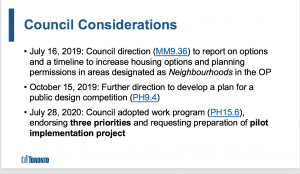
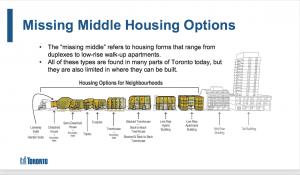
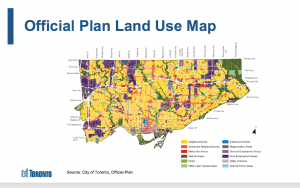
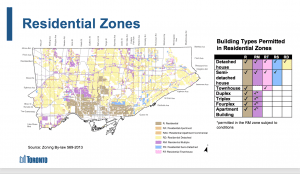
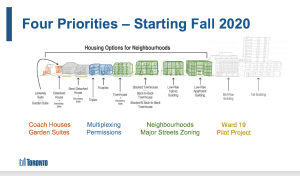
Leave a Reply
Want to join the discussion?Feel free to contribute!